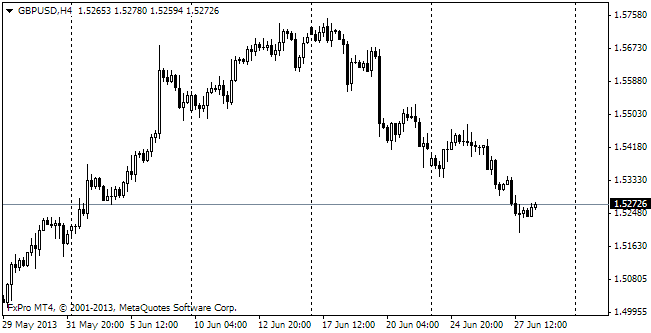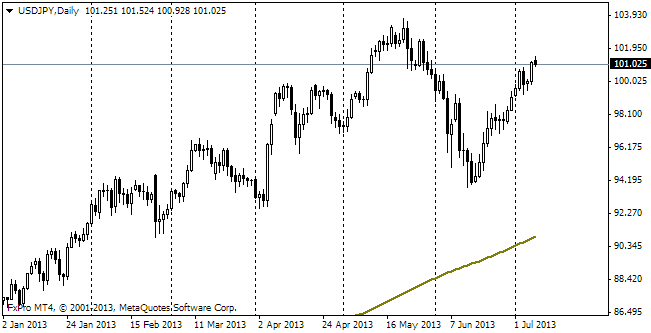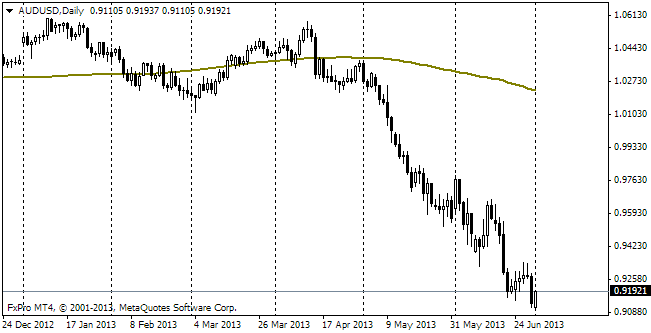EUR/usd
euro-bears almost reached the preceding lows in the pair. eurusd dropped down to 1.2456 during the day, yet the weekly low of 1.2437 was left untouched. While the morning weakness could be accounted for by the disappointing rates of the EU Final PMIs, the pair's recovery during the US session could hardly be explained by any fundamental factors. But let's relate everything in due order. The Services PMI and Composite PMIs for Italy and France proved to be in the green zone, besides the Italian activity in the services sector even became more intense in comparison with the previous month, which follows from growth of the index from 48.8 to 50.8. In France we saw only less sharp slowdown. In the meantime, Europe's locomotive demonstrated a lower growth rate than was evaluated a couple of weeks ago. The country's Services PMI was revised from 54.8 down to 54.4 and the Composite Index made 53.9 against the previous rate of 54.3. The Composite Index for the entire eurozone was revised from 52.2 to 52.1. The retail sales statistics failed to meet the expectations. In September the decline made 1.3% and the growth rate against the previous year fell from 1.9% to 0.6%. Such a sharp monthly decrease in sales hasn't been observed since April 2012. Also, there was news on unemployment in Ireland and Portugal – these countries keep showing gradual improvement without any surprises, though the current rates are still very high: 11.0% and 13.1% respectively. Yesterday closer to the beginning of the US session all attention was focused on ADP's employment statistics. They proved to be better than expected, reporting employment growth in the private sector by 230k in comparison with 225 a month ago (revised up from 213). The US labour market didn't slow down and it can be a favourable forecast regarding the country's inflation in the coming quarters. Since it is too early for forecasts about the beginning of rate increases in the USA, favourable economic news helps commodity markets and slightly weakens the US currency. But it is only a hypothesis. However, on Friday we should be ready that favourable payrolls and employment statistics, probably, won't arouse as much demand for USD as in the preceding months. Today market participants will be interested in the tone of comments of the ECB's president. Some expect that in view of the increased pressure on draghi he may prove to be less enthusiastic about further easing, which will support the euro.
GBP/USD
The poor Services PMI caused decline of the British currency during the trading session in London. The pair tumbled down to 1.5885 after the message that the index had fallen from 58.7 to 56.2. Let's be honest, these levels are quite high and also at quite a distance from the level of 50, which divides growth from decline. Probably, in this connection yesterday's decrease was so short. Already today the pair has recouped 80% of yesterday's losses and is now again fighting for 1.6000. It will hold out here if the industrial production stats are strong enough. Otherwise, the pair will have to say good bye to all attempts to consolidate above 1.6000 for a long time.

USD/JPY
The pair has almost uncontrollable with its sharp fluctuation during the day. Barclays say that if employment statistics are strong, the pair will be able to jump up to 117 already on Friday. Besides, below the correction is limited by the level of 112. But in our opinion, the easiness with which today the pair has broken through 115 speaks about the intention to reach 120 and only then stop to consolidate.

AUD/USD
Yesterday's selling of the AU currency, which followed the decline of Gold, pushed the pair to 0.8550 by the beginning of trading in Asia. Only the employment statistics, which reported employment growth by 24.1k and increase in the participation rate from 64.5% to 64.6%, managed to rescue the aussie.
